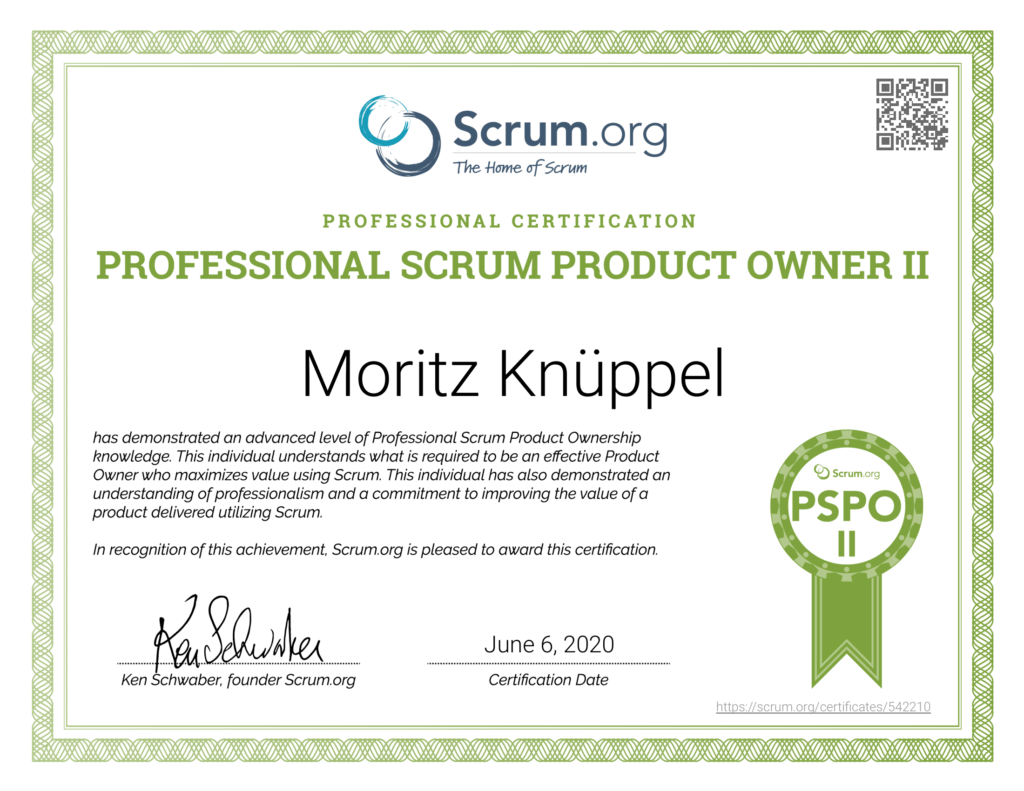PSPO II
The Professional Scrum Product Owner II certification, commonly known as PSPO II, is Scrum.org’s medium level certification for Product Owner.
Those awarded with it are certified:
- an advanced level of Product Ownership
- an understanding of value maximization and delivery

BASIC INFO
- Duration: 60 minutes
- Questions: 40; multiple-choice, multi-select, true/false
- Passing score: 85%
- Number of certification holders: 1,000+
ABOUT THE QUESTIONS
In PSPO I, the questions deal with direct facts from the Scrum Guide. They focus on the very literal job of the Product Owner in Scrum. In contrast, PSPO II deals with more practical aspects of the Product Owner position. Several of the questions contain small case studies: they describe situations and ask you to identify the best approach to solving this is by applying concepts from Scrum and Evidence-Based Management.
The key areas that are addressed by the questions are:
- Evidence-Based Management
- Stakeholder management
- Product Ownership in scaled environments
- Value Maximization
Most of the questions with multi-select options, i.e. those where many answers are correct, will inform you how many answers to select. For example, they will state “(choose the best three answers)”. There are, however, also a few questions asking you to “(choose all that apply)”.
HOW TO PREPARE FOR PSPO II
PSPO II is an advanced exam and while it can be passed well without attending a dedicated PSPO-A training session, such a session may be helpful in getting a more well-connected overview of the Scrum framework. It will also allow you to revisit the different aspects of the role of the Product Owner.
Read the Scrum Guide multiple times until you are comfortable with its terminology and the concepts it describes. Special focus should be placed on the sections concerning the topics listed above. For a comprehensive analysis of the Scrum Guide, read The Scrum Guide Explained.
Review the Evidence-Based Management Guide several times until you are comfortable with the terminology, especially the idea of leading vs. lagging indicators and the four Key Value Areas (KVA).
To understand the role of the Product Owner more thoroughly, especially regarding what is and is not their job with regard to stakeholders, it is useful to review the Product Owner Stances. The posts provide an overview over common anti-patterns Product Owners may fall into, as well as better alternative stances for Scrum Masters to take. Furthermore, the Product Owner Maturity Model is helpful to review.
Use the practice quiz provided below.